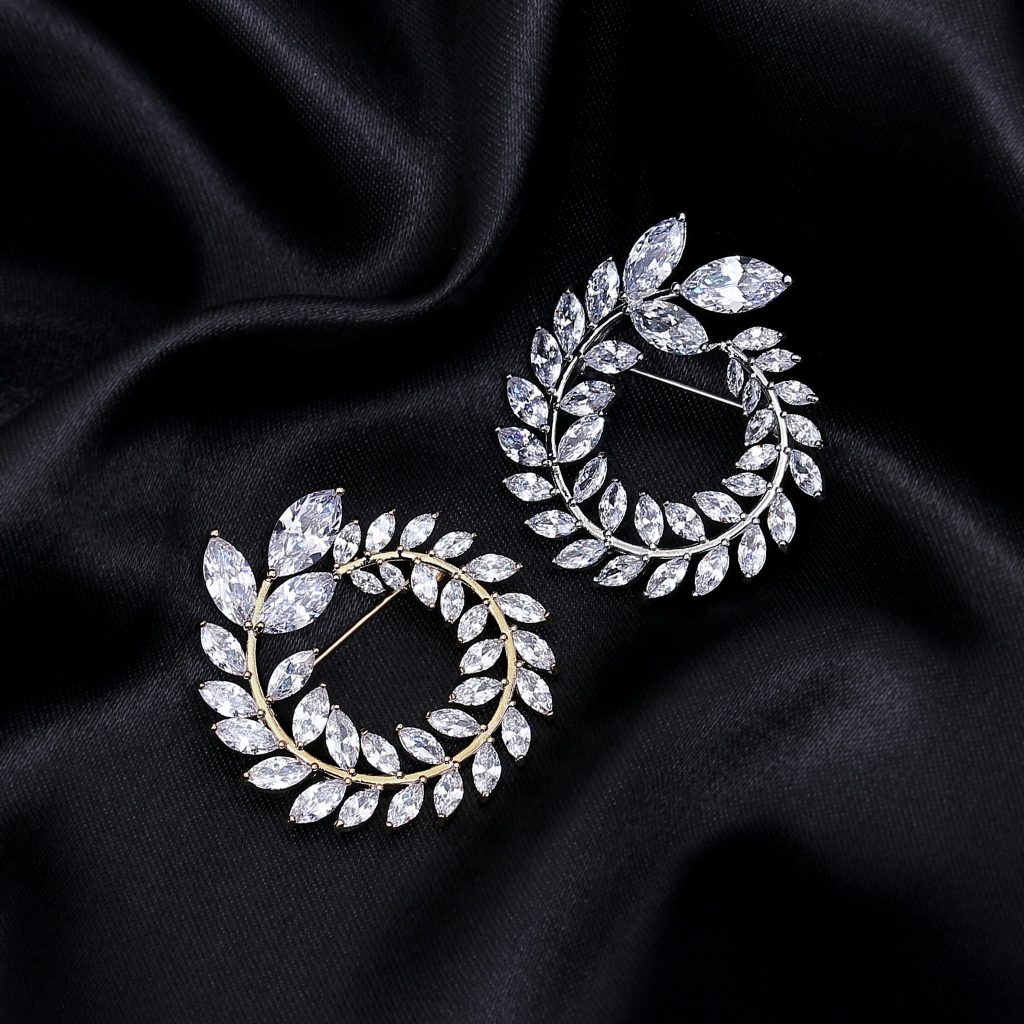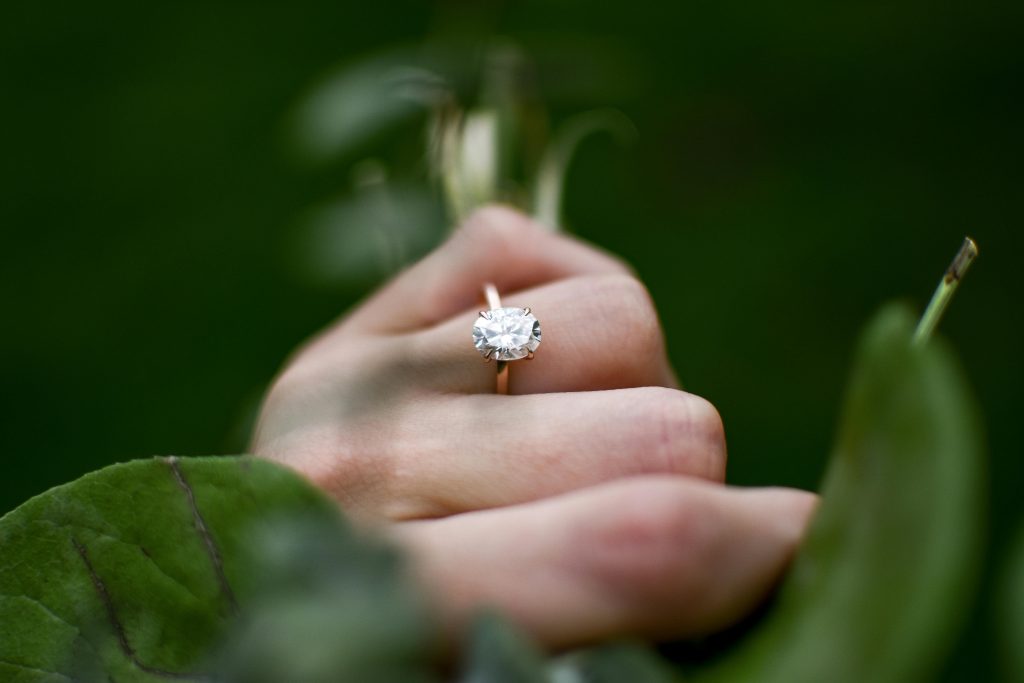Custom diamond jewelry refers to bespoke pieces that are designed and crafted according to the unique preferences, styles, and specifications of the buyer. Unlike mass-produced jewelry found in retail stores, custom pieces begin with an idea—either from the customer’s imagination or with the guidance of a jeweler—and evolve through a series of steps involving design, material selection, stone sourcing, and fabrication. The appeal of custom diamond jewelry lies in its exclusivity and personal significance. It allows individuals to create heirloom-quality items that reflect personal milestones, fashion tastes, or sentimental value. For sellers, offering custom jewelry services enables them to tap into niche markets, increase profit margins, and build stronger customer relationships.

The Buyer’s Perspective: Initial Planning and Budgeting
From the buyer’s point of view, the custom jewelry process starts with planning and budgeting. The customer must first define the purpose of the piece—whether it’s for an engagement, anniversary, fashion statement, or gift. This decision influences the choice of design elements, such as the type of diamond, metal, and setting style. Budgeting is a critical early step. Custom jewelry can range from a few hundred to tens of thousands of dollars depending on materials, complexity, and craftsmanship. Buyers should communicate their budget transparently with their jeweler to ensure feasibility. It is also beneficial to conduct preliminary research about diamonds—particularly the 4Cs: cut, clarity, color, and carat weight—as these factors significantly affect cost and appearance. An informed customer is more likely to make confident and satisfactory decisions throughout the customization process.
The Design Phase: From Concept to Technical Drawings
Once the buyer’s goals and budget are established, the next phase involves translating a concept into a tangible design. This usually begins with rough sketches, either provided by the client or created by the jeweler during a consultation. Modern jewelers often use CAD (computer-aided design) software to render precise 3D models of the jewelry. These digital blueprints help visualize proportions, setting styles, and overall aesthetics before any physical work begins. CAD models also allow for easy revisions, helping the buyer fine-tune details such as prong types, band width, or diamond orientation. For highly complex designs, some jewelers create wax or resin prototypes using 3D printing to offer a tactile preview. This collaborative process ensures that both the designer and client are aligned on expectations before proceeding to production, minimizing the risk of misunderstandings or costly redesigns.
Choosing the Right Diamonds and Materials
Material selection is a pivotal part of creating custom diamond jewelry. Buyers typically choose from various metals, including gold (yellow, white, or rose), platinum, and occasionally palladium or sterling silver for more budget-conscious pieces. The choice of metal affects not only the visual appeal but also the durability and price. When it comes to diamonds, the buyer must consider the balance between the 4Cs. For instance, a slightly lower clarity or color grade can reduce cost while still maintaining overall brilliance if the cut is excellent. In some cases, lab-grown diamonds are preferred for their ethical sourcing and lower price point. Additionally, accent stones, halo settings, or mixed gemstones may be incorporated to enhance uniqueness. Sellers often assist in sourcing certified stones through reliable suppliers, ensuring quality and authenticity. This stage is where both aesthetic and functional considerations intersect, making professional guidance essential.
The Crafting Process: Turning Design into Reality
After finalizing the design and selecting all materials, the jeweler begins the actual crafting process. Depending on the complexity of the piece, this may involve traditional benchwork, casting, stone setting, polishing, and finishing. Skilled artisans use various techniques such as lost-wax casting, hand-forging, or CNC milling to shape the metal components. Diamond setting is a highly meticulous task that may involve prong, bezel, channel, or pavé settings, depending on the design. The jeweler ensures that each stone is securely fitted and aligned for maximum brilliance. Attention to detail during polishing and finishing stages is crucial for achieving a high-quality look. The entire production process can take anywhere from two to eight weeks or more, depending on the jeweler’s workload and the intricacy of the design. For buyers, this phase is mostly observational, but some jewelers offer periodic updates or behind-the-scenes photos to maintain engagement and build excitement.

Quality Control and Final Appraisal
Once the jewelry is crafted, the final stages involve rigorous quality control and, often, a formal appraisal. Quality control checks include verifying the setting integrity, ensuring the stones are secure and evenly aligned, assessing symmetry and polish, and confirming that all specifications match the original design. Reputable jewelers also inspect soldering seams, metal uniformity, and surface finishes to eliminate any defects. After passing these internal checks, many buyers choose to have their piece appraised by a certified gemologist or third-party appraiser. Appraisals provide a detailed valuation based on the current market value of materials, craftsmanship quality, and overall design. This is especially important for insurance purposes, as it allows buyers to protect their investment against theft, loss, or damage. Appraisal documentation should include photographs, diamond grading summaries, metal content details, and a replacement value. For both buyers and sellers, this step is essential to validate the worth and authenticity of the custom creation.
Selling Custom Diamond Jewelry: Opportunities and Challenges
From the seller’s standpoint, offering custom diamond jewelry involves both unique opportunities and challenges. Custom orders tend to command higher margins than mass-produced pieces due to the personalized service and craftsmanship involved. They also help foster long-term customer relationships, as clients who are satisfied with a bespoke experience are more likely to return for future commissions or refer others. However, customization also carries risks. These include design miscommunication, delays, or customer dissatisfaction with the final product. It is essential for sellers to manage expectations clearly from the beginning, using detailed contracts or design agreements that outline the process, timelines, payment terms, and refund or alteration policies. Additionally, sellers must be prepared to handle a wide range of styles, preferences, and design requests, which may require continuous investment in design tools, skilled labor, and inventory. The key to success in this space is balancing creativity with logistical precision.
Legal and Ethical Considerations
Both buyers and sellers should be aware of legal and ethical responsibilities related to custom diamond jewelry. For buyers, it is crucial to confirm that the diamonds used are conflict-free and sourced ethically. Many reputable jewelers provide Kimberley Process Certification or documentation from ethical sourcing initiatives that trace the origin of the stones. Lab-grown diamonds offer an alternative for those seeking guaranteed ethical sourcing. For sellers, transparency is a legal and reputational obligation. Misrepresenting the quality or origin of a diamond, using misleading grading terminology, or failing to disclose treatments can lead to legal consequences and loss of trust. Jewelers should also provide clear terms and warranties regarding workmanship, especially for custom orders that may not be returnable. In some jurisdictions, written contracts outlining deliverables, payment structure, and dispute resolution mechanisms are recommended or required. Ethical selling practices not only protect both parties legally but also build a positive brand image in a competitive market.
Marketing and Client Relations for Jewelers
Marketing custom diamond jewelry effectively requires a nuanced strategy that combines technical credibility with emotional storytelling. Because custom jewelry appeals to personal expression and life milestones, sellers should use testimonials, behind-the-scenes content, and high-quality visuals to convey both the craftsmanship and emotional value of each piece. Digital channels such as Instagram, Pinterest, and YouTube are ideal platforms for showcasing custom work. Educational content—such as blog posts or videos explaining the design process, diamond selection, or care tips—can also establish the seller as a knowledgeable authority. Moreover, client relations play a pivotal role. Prompt communication, design flexibility, and post-sale support, such as resizing or cleaning services, contribute to a positive customer experience. Many successful jewelers leverage CRM (customer relationship management) tools to track interactions, send follow-ups, and offer loyalty incentives. Ultimately, the most effective marketing in the custom jewelry space relies on authenticity, expertise, and trust.
Final Thoughts and Strategic Tips
Custom diamond jewelry offers a deeply rewarding experience for both buyers and sellers. For buyers, it is a chance to transform a personal vision into a tangible, meaningful object. The process requires careful planning, open communication, and an understanding of design and material trade-offs. For sellers, custom jewelry represents a high-value, relationship-driven business model that rewards creativity, precision, and customer engagement. However, it also demands stringent quality standards, ethical sourcing, and legal clarity to ensure long-term success. Both parties benefit from investing time in education—whether it’s about diamonds, design software, or fabrication techniques. Buyers should never hesitate to ask questions, request design previews, or consult multiple professionals before committing. Sellers, on the other hand, must strive to innovate while maintaining consistency and integrity. As technology evolves and consumer preferences become more individualized, the custom diamond jewelry market will likely continue to grow, offering vast potential for those who approach it with both artistry and professionalism.




